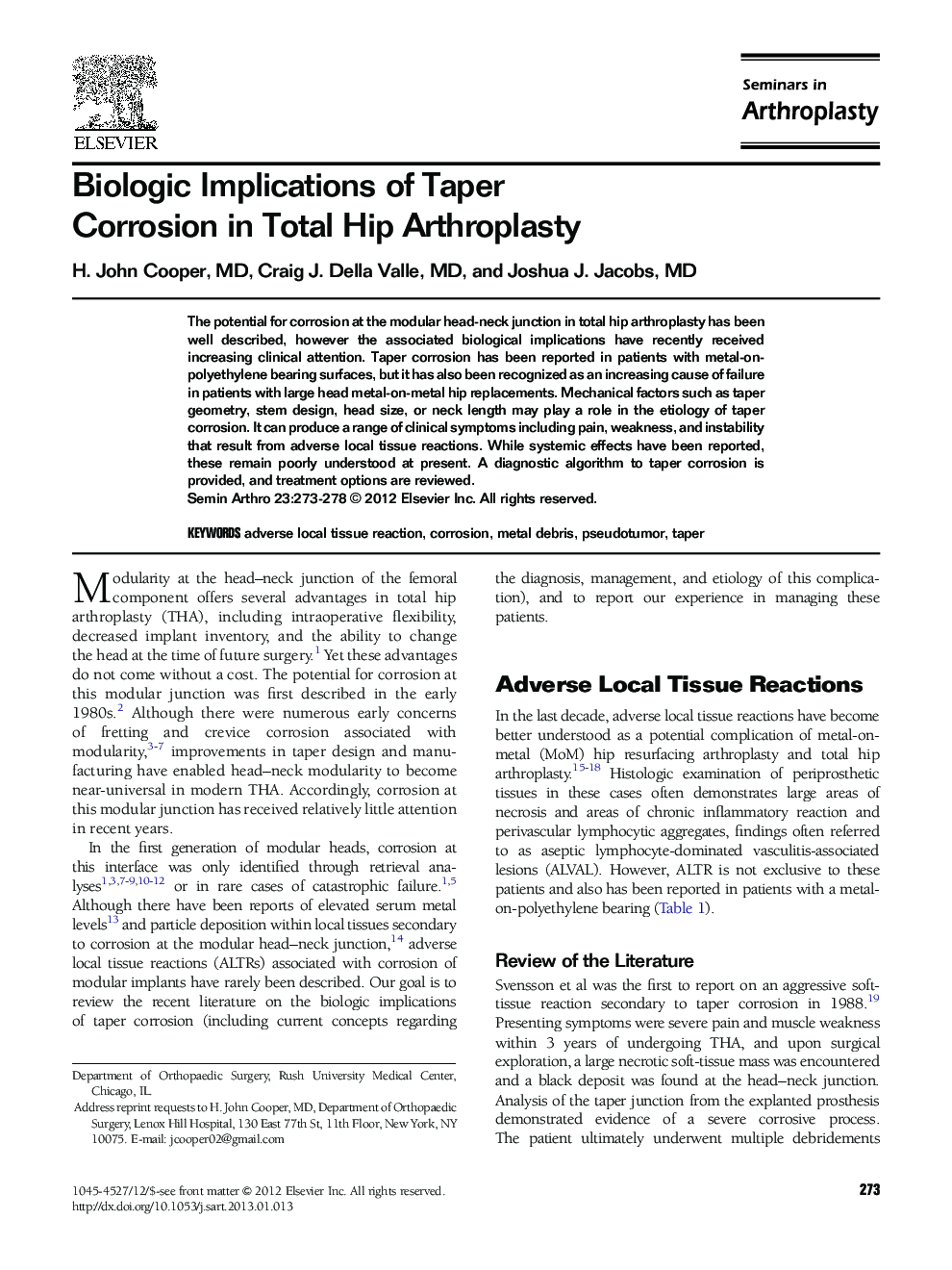| Article ID | Journal | Published Year | Pages | File Type |
|---|---|---|---|---|
| 4093774 | Seminars in Arthroplasty | 2012 | 6 Pages |
The potential for corrosion at the modular head-neck junction in total hip arthroplasty has been well described, however the associated biological implications have recently received increasing clinical attention. Taper corrosion has been reported in patients with metal-on-polyethylene bearing surfaces, but it has also been recognized as an increasing cause of failure in patients with large head metal-on-metal hip replacements. Mechanical factors such as taper geometry, stem design, head size, or neck length may play a role in the etiology of taper corrosion. It can produce a range of clinical symptoms including pain, weakness, and instability that result from adverse local tissue reactions. While systemic effects have been reported, these remain poorly understood at present. A diagnostic algorithm to taper corrosion is provided, and treatment options are reviewed.
